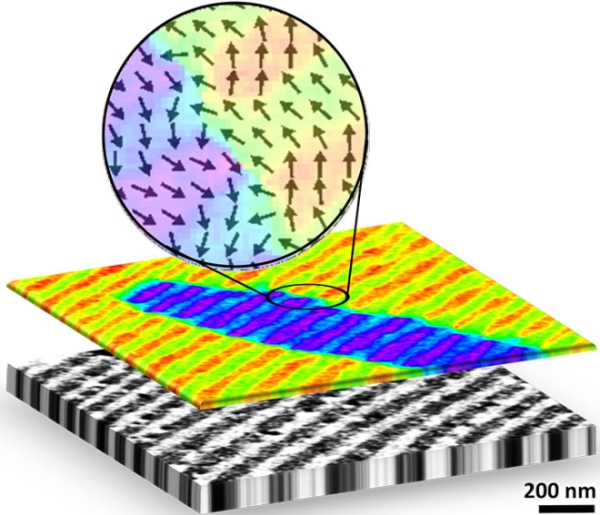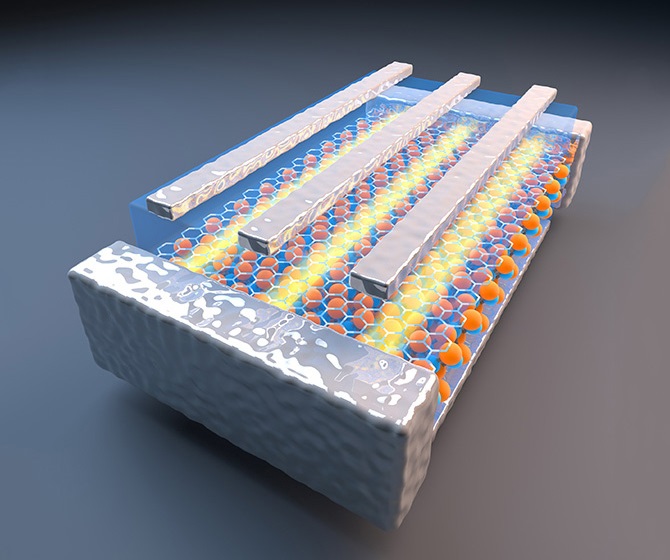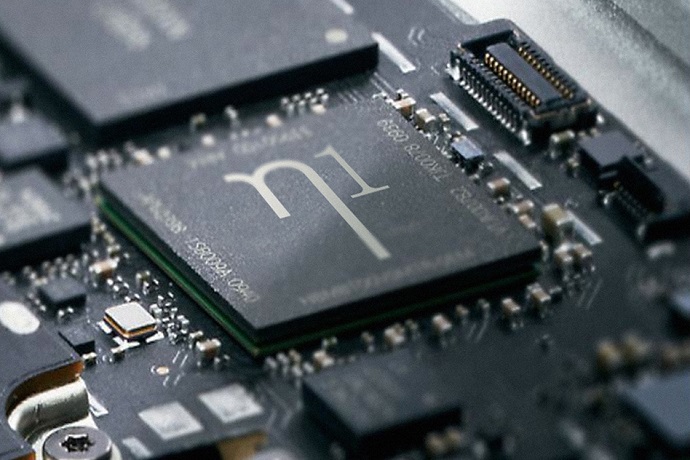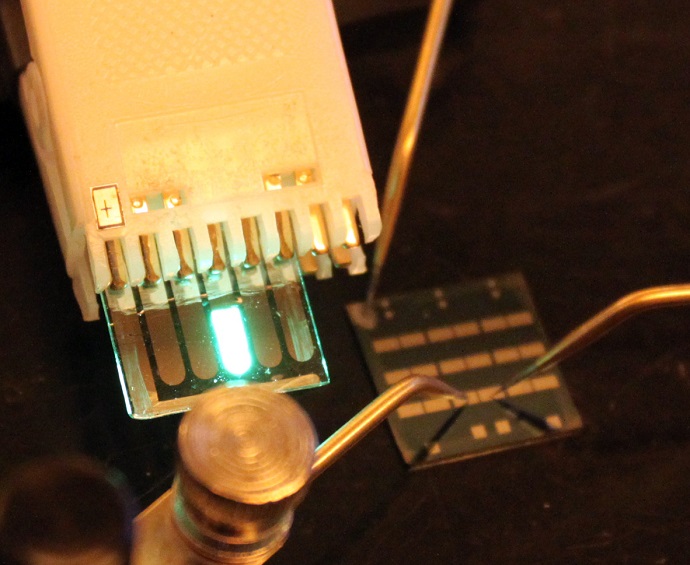July 30, 2013
Researchers from the NIST Center for Nanoscale Science and Technology and the University of California, Berkeley have discovered a way to create simultaneous images of both the magnetic and the electric domain structures in ferromagnetic/ferroelectric multilayer materials.* In a ferroelectric material, the polarization, or direction, of the internal electric field can be controlled by a applying a voltage across the film; in a ferromagnetic material, current-induced magnetic fields are usually used to control the magnetization direction. By combining these two types of materials, it is possible to create low-power magnetic devices, including memory that can be controlled by electric fields (applied voltage) instead of less energy-efficient magnetic fields (applied current). Measuring how the magnetization in a ferromagnet realigns in response to changes in the electric polarization of an adjacent ferroelectric is an important step towards making such low-power devices possible.
The researchers used scanning electron microscopy with polarization analysis (SEMPA) to directly image the magnetization direction in thin ferromagnetic films made of cobalt-iron that were grown on thicker ferroelectric substrates made of bismuth ferrite. While taking the SEMPA measurements, which use low-energy secondary electrons to visualize the magnetization in the thin cobalt-iron film, they also imaged the ferroelectric domains using a separate detector to measure higher-energy backscattered electrons from the buried bismuth ferrite. Because these electrons are much higher in energy, they can exit from deeper in the sample, allowing the ferroelectric to be imaged beneath the ferromagnetic film. The SEMPA and backscattered electron images provided new information about the coupling between the two layers that occurs at their interface. Although bismuth ferrite is primarily ferroelectric, it also has antiferromagnetic properties (it has no net magnetization). However, when a ferromagnetic film is deposited on top of a bismuth ferrite film, the bismuth ferrite becomes slightly ferromagnetic and its induced magnetization changes along with the adjacent cobalt-iron’s magnetization. It has been theorized that when the ferroelectric polarization in the bismuth ferrite is switched by an electric field, the small ferromagnetic component also switches and in turn changes the direction of the cobalt-iron magnetization.
The SEMPA and backscattered electron images showed that the local, nanoscale direction of the magnetization of the cobalt-iron film nearly aligns with both the interfacial direction of the ferroelectric polarization and with the induced ferromagnetism of the bismuth ferrite. By modeling the deviation from perfect alignment, the researchers were able to infer the strength of the interaction at the interface between the two materials.
Because these initial experiments have been promising, the researchers plan to add electrical contacts to small patterned cobalt-iron elements and to use SEMPA to conclusively observe whether their magnetization can be changed electrically.
*Interfacial coupling in multiferroic/ferromagnet heterostructures, M. Trassin, J. D. Clarkson, S. R. Bowden, J. Liu, J. T. Heron, R. J. Paull, E. Arenholz, D. T. Pierce, and J. Unguris, Physical Review B 87, 134426 (2013).















